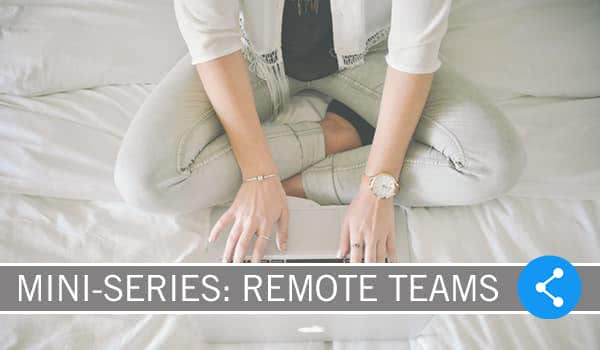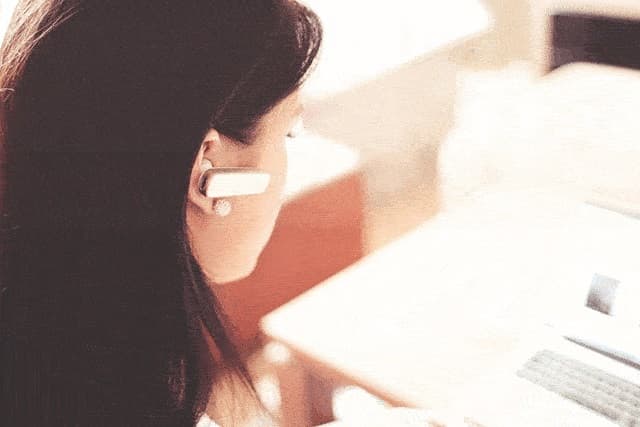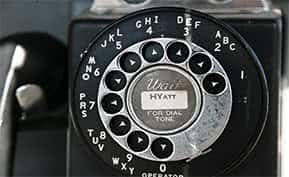Workforce Management
Mini-Series: My Take On Working From Home

Welcome to Remote Team Week, a week we’ve devoted to the remote employee and the different ways to support a remote work environment. For my contribution, I decided to draw from my personal experiences and share the things I’ve learned from my time spent working from home.
When you work in an office environment, it’s fairly easy to separate your work life from your home life — being able to leave your work location and return to your living space creates a definable boundary between the two worlds. But when your office is your home, the lines can get a little blurry. It’s important, mental-health-wise, to keep these two segments of your life from merging into one, and as someone who can speak from experience, keeping work-life and life-life apart can be work all on it’s own.
The Separation of Work and Life
Everyone is different, and therefore everyone needs different methods and processes in order to maintain a healthy work-life balance. However, there are some universal tips and tricks that can make working from home easier on yourself, your coworkers and your CEO. Starting out with a general idea of the pitfalls you may encounter and having an arsenal of solutions will allow you to work in a way best suited for you and your company.
Set time frames and stick to them

Photo courtesy of Pexels user Unsplash
Decide when you’re starting work each day and (excluding extenuating circumstances) stick to that schedule. The reason for this is two-fold: working in the same room where you watch TV can put you in the ‘this is my relaxing space’ mindset and make it hard to focus. On the other end of the spectrum, associating the space that should be reserved for your personal time with the work you did all day can keep you from ever fully relaxing, and all-work-and-no-play made Jack Torrence want to murder his family. Instituting strict work hours means not just stepping away from the work computer, but stepping away from that headspace as well, regardless of physical environment.
This goes for breaks, too. Getting away from your cubicle and taking a walk to the water cooler may feel second nature in the office, but working from home means you run the risk of never getting up at all. Stand up, take a moment to look out a window, and TAKE YOUR LUNCH BREAK. Working through lunch may be fine every once in a while when deadlines call for it, but consistently skipping that midday time for yourself means you run the risk of burning out completely. Let’s face it — being absent for an (earned) hour is better than being useless for days.
Put on pants

Photo courtesy of Pexels user Snapwire
Working from home can sometimes mean you don’t leave the house as often, and as tempting as it may be to take advantage of not ‘needing’ to be presentable, the transformation from indoor cat to shadow-dwelling troll monster can happen without you even realizing it. I definitely fell into this trap for the first several weeks of my WFH experience, and there came a day when I realized I had forgotten what it felt like to wear jeans or see the sun. The motivation to maintain day-to-day living standards might be a struggle at first, but trust me, it’s worth working for.
Aside from potentially turning you into the person your friends are embarrassed to be seen with, letting habits like putting on *real* pants slip through the cracks can start to pick away at your mental state. Not only can you find yourself beginning to be grumpier and less energetic, but falling into an eternal ‘pajama state’ can actually lead to a general dissatisfaction with life and depression. When you work from home, you tend to have to work harder to maintain positive interactions with your day, and sometimes doing something as simple as putting on deodorant or making your bed is all it takes to feel human again.
Don’t connect to work on personal devices

Photo courtesy of Pexels user Tofros.com
This can be tricky for Type A personalities, and maybe not entirely feasible for higher-management positions, but at least put in the effort and the intent to keep your personal devices separate from your work accounts. No work-related email notifications or instant messages should end up on your personal cell phone, nor should Gmail ask you which email account you want to log into on your personal computer. And the same goes for work devices; don’t use your work computer after-hours to shop Amazon, and don’t call Grandma on a company-funded cell phone.
Keeping work on work devices and life on personal devices promotes that work-life balance and separation thing I keep talking about. You should take it seriously when you log off for the day, and knowing when you get every new work email on your personal cell phone breaks that boundary. But that’s not the only reason —- maintaining a solid separation also ensures that, should your productivity ever be called into question, your company laptop doesn’t contain your Netflix streaming history. And if part of your job includes utilizing company social channels, it also saves you from accidentally posting something on the company Twitter that was definitely not meant for the company Twitter.
Don’t let people take your job lightly

Photo courtesy of Pexels user Unsplash
To the casual observer, working from home looks a whole like ‘not really working’. The people in your life may interpret your job as being one that a.) doesn’t require 40 hours a week or b.) is so completely flexible and unscheduled that you can drop everything in an instant to pick up their dog from the groomers. Gentle reminders that you are on the clock might be necessary — if you worked in an office, they wouldn’t exactly walk right in to show you the slideshow of their most recent vacation, would they?
Generally, no one means to disrespect your position as a WFH employee. Being a remote worker isn’t as common-place as working in an office, and when most people picture ‘work from home’ they see freelancers, a career that doesn’t necessarily come with set office hours. Working a 9-5 from your living room is a newer concept, and it sometimes takes a minute for the people in your life to realize that ‘being home’ does not equal ‘available’.
Be accessible and for the love of God, be reliable

Photo courtesy of Pexels user picjumbo.com
Working from home can give you the impression that you are allowed to be more relaxed than you would be in an office environment, but it’s actually very much the opposite. Make sure your coworkers know when you’ll be accessible online and by phone, and then make sure that you are accessible online and by phone. Not being at your desk when someone is looking for you is one thing, but when they can’t see you AND can’t reach you it is not only detrimental to your workplace but can start to deteriorate your working relationships as well.
Working remotely and working from home is a trust-based system. Dropping the ball when in-office means your coworkers are irritated with you and your manager is disappointed. Dropping the ball remotely is a much bigger deal. The space created by your absence from the office is yours to bridge, not your manager’s, so make sure that when they need to find you, you can be found.
Living that WFH Life
Working from home can create new challenges, but creating a functional WFH environment that suits both you and your manager is definitely possible. What it all really boils down to is adjusting your office sensibilities to match a new circumstance, holding yourself accountable to a different set of expectations, and defending that dividing line between work and home. Just because you are physically near your work computer all hours of the day does not mean you are available, but when it’s time to work, it’s time to work. And while a WFH life may not be ideal for everyone, I have to be honest — it’s pretty awesome when your commute consists of walking from your bedroom to a desk chair.
Photo courtesy of Pexels user Stokpic






